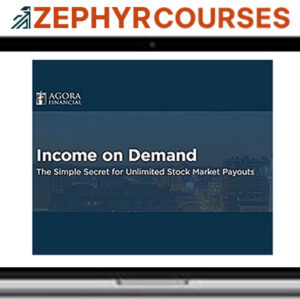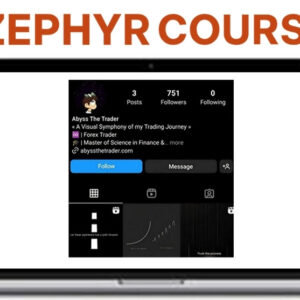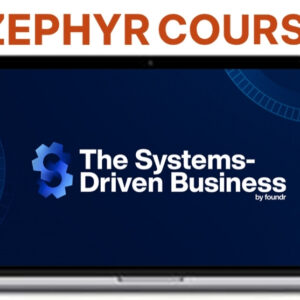Description
The Core Principles of Anil Mangal’s Wave Trading
At the heart of Anil Mangal’s Wave Trading is a focus on market structure and price behavior rather than reliance on traditional indicators.
You’ll learn to read the market by analyzing wave patterns, which reflect the collective actions and emotions of traders. Instead of chasing signals, you’ll interpret how price moves in waves—expansions and corrections—mirroring shifts in market psychology.
This approach helps you understand when the crowd is acting out of fear or greed, and how that creates opportunities. By concentrating on these core principles, you develop the skill to anticipate what’s likely to happen next.
You won’t depend on lagging tools; instead, you’ll trust your ability to see the story behind price movements and respond confidently to changes in the market.
How to Identify High-Probability Setups Using Wave Analysis
So, how do you actually spot high-probability setups with wave analysis? First, you’ll need to recognize clear wave patterns—impulses and corrections—by studying price charts closely.
Focus on waves that align with the overall trend, as these often offer the best opportunities. Look for points where corrective waves lose momentum; these spots can signal a strong continuation move.
Don’t ignore trading psychology. The emotions of market participants often drive the formation of wave patterns.
When you notice hesitation or exhaustion during corrective phases, it’s a clue that the crowd may be ready to push price in the trend’s direction again.
Tips for Applying Wave Trading Techniques in Real Markets
Spotting high-probability setups with wave analysis is only the first step; putting these techniques into practice demands discipline and adaptability.
When you trade in real markets, you’ll face unpredictable conditions and emotional challenges. To consistently apply wave trading strategies, you must prioritize risk management and stay aware of market psychology.
Use stop-loss orders to protect your capital, and don’t let emotions dictate your decisions. Remember, markets don’t always follow your analysis, so flexibility is key.
Here are three practical tips:
- Set clear entry and exit rules based on your wave analysis to avoid impulsive trades.
- Always define your risk for each trade, sticking to a percentage of your capital you’re willing to lose.
- Regularly review your trades to learn from mistakes and adjust your approach.
Frequently Asked Questions
What Is Anil Mangal’S Professional Background in Trading?
When you explore Anil Mangal’s professional background in trading, you’ll find he’s developed a unique trading philosophy and approach to market analysis, focusing on technical analysis and wave structures to guide traders in making informed decisions.
Are There Any Recommended Resources to Learn Directly From Anil Mangal?
If you want to learn Wave strategies and trading psychology directly, you can join his official YouTube channel, webinars, or online courses. You’ll get firsthand insights, practical tips, and real-time examples to strengthen your trading skills.
How Much Capital Is Needed to Start Wave Trading?
When you start wave trading, your initial investment depends on your trading strategy and risk tolerance. You don’t need a large sum; many brokers let you begin with as little as $100, but more capital offers flexibility.
Does Anil Mangal Offer Mentorship or Live Trading Sessions?
You can access mentorship benefits and learn trading strategies through some educators who offer mentorship or live trading sessions. By joining, you’ll gain hands-on experience, direct feedback, and personalized guidance to refine your trading approach and decision-making.
What Markets Does Anil Mangal Primarily Focus On?
You’ll find a primary focus on forex markets and cryptocurrency trends when you look into the markets he covers. You can expect insights into global currency pairs and the latest moves in digital assets for your trading strategies.












 10 Systems-Driven Business – Vinay Patankar
10 Systems-Driven Business – Vinay Patankar  B The Trader – Trading Course
B The Trader – Trading Course  Adam Armstrong – Bedroom Boss and Better in Bed
Adam Armstrong – Bedroom Boss and Better in Bed  Black Rabbit Trader – 4D Bootcamp
Black Rabbit Trader – 4D Bootcamp  ABCs of Attraction – Practical Day Game
ABCs of Attraction – Practical Day Game  AI Blogger + 10 Minute Emails – Matt Giaro
AI Blogger + 10 Minute Emails – Matt Giaro  Beachbody LIIFT4 – Joel Freeman
Beachbody LIIFT4 – Joel Freeman  Blake Young – Market Profile Monkey Bars Class
Blake Young – Market Profile Monkey Bars Class  Amy Crane – Ads Manager School
Amy Crane – Ads Manager School  ALA All In – DIY 800+ Credit Restoration Bundle
ALA All In – DIY 800+ Credit Restoration Bundle  Ali Abdaal – Part-Time YouTuber Academy
Ali Abdaal – Part-Time YouTuber Academy  Bob Serling – The Million Dollar Minute
Bob Serling – The Million Dollar Minute  Ben Adkins – Thousand Dollar Days
Ben Adkins – Thousand Dollar Days  Axia Futures – Futures Trading & Trader Development
Axia Futures – Futures Trading & Trader Development  Bob Serling – Ultimate Leverage Licensing Express
Bob Serling – Ultimate Leverage Licensing Express  Andy Elliott – 100K to 400K
Andy Elliott – 100K to 400K  AgencySavvy – Agency Owners Blueprint
AgencySavvy – Agency Owners Blueprint  Brian Tracy – Sales Success Made Simple
Brian Tracy – Sales Success Made Simple  Core 100 Training - Tony Robbins
Core 100 Training - Tony Robbins  Alex Social – NRYNE
Alex Social – NRYNE